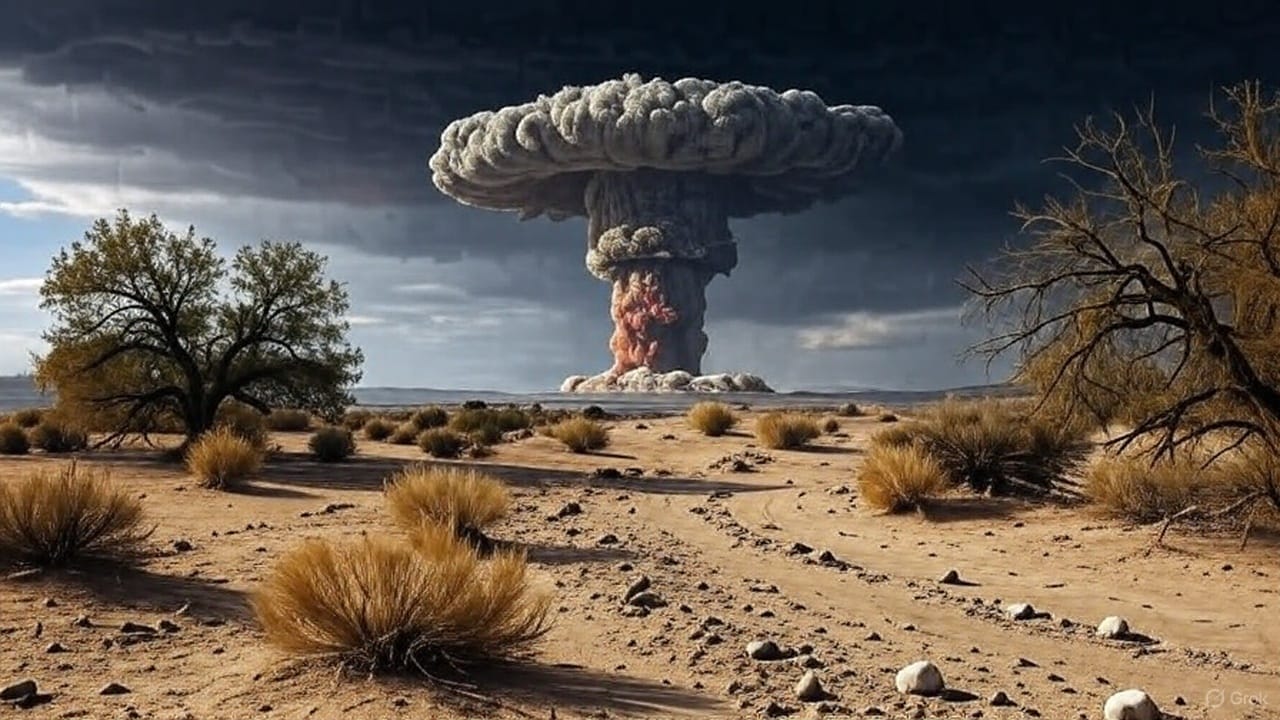- Shortlysts
- Posts
- Trump Claims China and Russia Are Secretly Testing Nukes. Is America Falling Behind?
Trump Claims China and Russia Are Secretly Testing Nukes. Is America Falling Behind?
Trump warns China and Russia are secretly testing nukes. The U.S. may face pressure to rejoin the race or fall behind.

What Happened
President Trump is warning that China and Russia are quietly resuming nuclear weapons testing. He says the United States is at risk of falling behind. In a recent 60 Minutes interview, Trump said he authorized nuclear testing during his administration because he believed adversaries were already violating the global ban.
Trump pointed to reports that Russia has expressed its intent to resume testing. He also claimed that China is conducting underground nuclear tests out of view of international monitors. He did not provide direct evidence. He insisted that the U.S. should not be the only major power playing by the rules.
Chinese officials quickly denied the claim. A spokesperson for the foreign ministry said China maintains a no first use nuclear policy and a responsible stance on arms control. Russia has not officially responded to Trump’s comments. It has previously passed legislation to withdraw from the Comprehensive Nuclear Test Ban Treaty.
Current U.S. officials have made clear that no full-scale nuclear detonations are planned. Instead, subcritical tests are being prepared at the Nevada National Security Site. These are non-explosive experiments that study the behavior of nuclear materials without triggering a chain reaction. They help maintain the aging U.S. arsenal and confirm the reliability of existing weapons systems.
Why It Matters
Trump’s warning taps into long-standing fears in the national security community that the U.S. nuclear deterrent is eroding. China and Russia are modernizing and expanding their arsenals. If either country is secretly conducting explosive nuclear tests, it could give them valuable technical data. This data could help them design more advanced and adaptable weapons.
Such a leap would be difficult to replicate without conducting similar tests. The U.S. has invested billions in warhead life extension programs and simulation-based testing. These methods have limitations. Some scientists and military officials argue that physical testing may eventually be necessary to ensure reliability and credibility.
The credibility of arms control agreements is also at stake. Comprehensive Nuclear Test Ban Treaty, signed in 1996, was designed to freeze the development of new nuclear weapons by banning all explosive tests. It has never come into full legal force because key countries, including the U.S., China, and North Korea, have never ratified it.
If Russia and China are ignoring the treaty in practice, the global non-proliferation regime begins to look symbolic rather than binding. That perception could push other countries to reevaluate their own nuclear programs. This is especially true in volatile regions like the Middle East or East Asia. The breakdown of nuclear norms is difficult to contain once it begins.
How It Affects You
A return to nuclear testing would alter military strategy. It could reshape the geopolitical landscape and hit taxpayers directly. If the U.S. chooses to re-enter the testing arena, it will require a massive investment in infrastructure, laboratories, personnel, and security. Billions in federal spending would be redirected toward weapons development and maintenance.
It would also complicate relationships with key U.S. allies. Many European and Asian partners are strongly opposed to renewed nuclear testing. Their defense strategies depend on the credibility of the U.S. nuclear umbrella. If they question that credibility or see Washington abandoning diplomatic restraint, they may feel pressure to develop their own weapons. This could increase the risk of global proliferation.
For Americans, this is a reminder that nuclear strategy is no longer a relic of the Cold War. The balance of power is shifting rapidly. China is expanding its arsenal. Russia is threatening new capabilities. The U.S. remains in a holding pattern. Regardless of whether Trump’s claims are verified yet, they reflect a growing concern in Washington that the rules of nuclear engagement are changing. The U.S. may need to respond more forcefully to avoid falling behind.